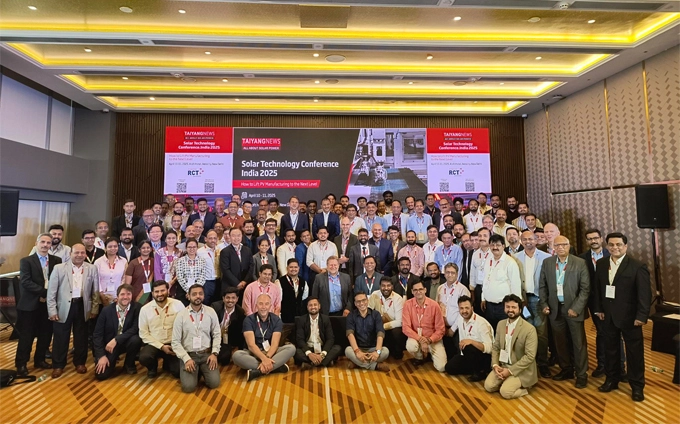Roadmap
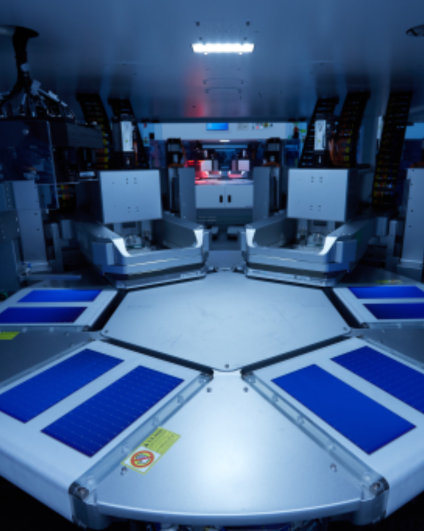

HJT cells combine the benefits of crystalline silicon and thin-film technologies. With outstanding light absorption and passivation, HJT outperforms TOPCon in both efficiency and performance.
As one of the leading solar cell technologies, it maximizes conversion efficiency and power output, representing the future direction of next-generation cell technology.
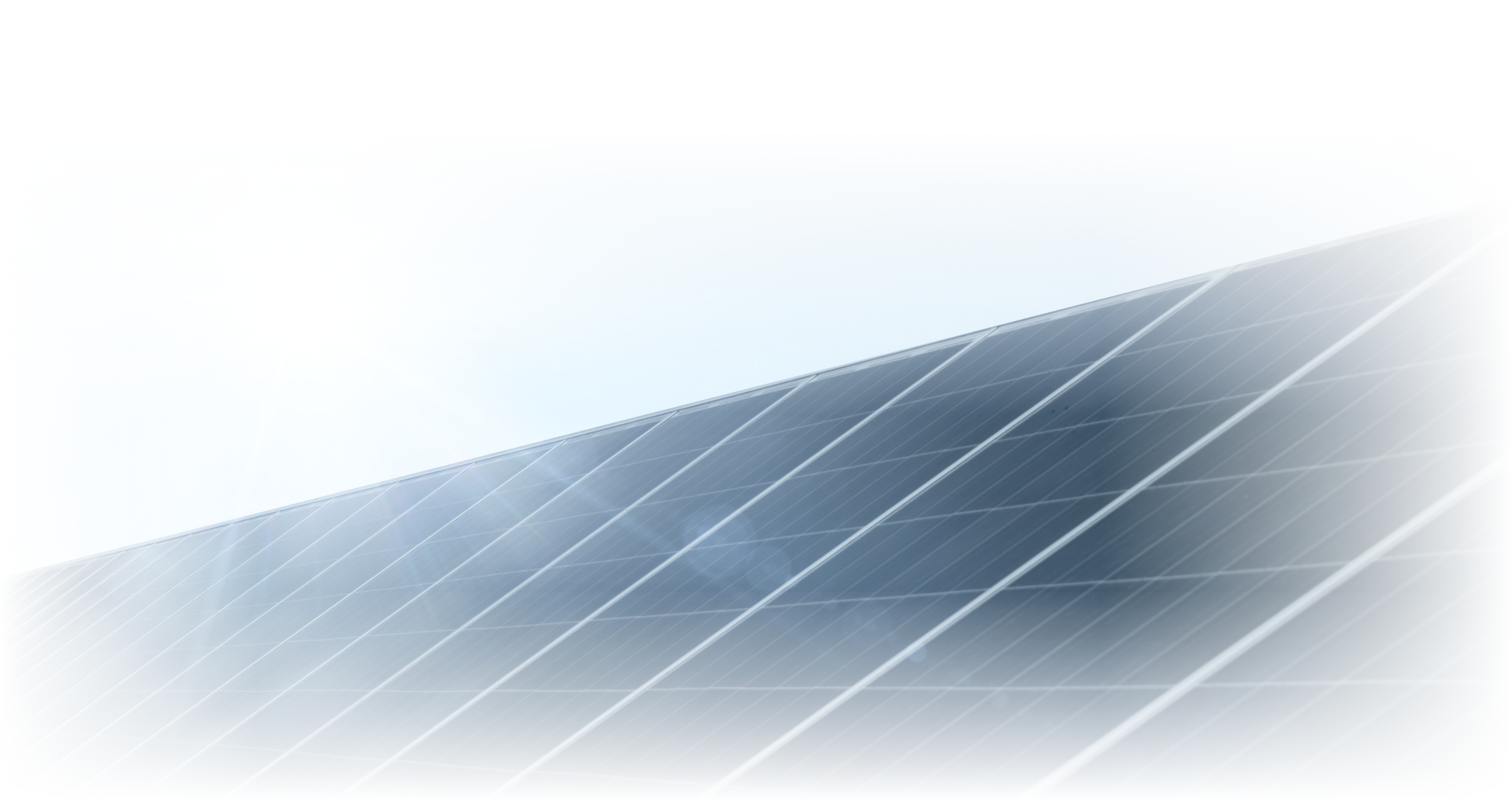


2021
24.5%
475 W
M6-144

2022
25.1%
715 W
G12-132

2023
25.5%
735 W
G12-132

2024
26.0%-26.5%
760 W
G12-132

2026
28.0%
800 W
HJT+ Perovskite
Roadmap of HJT Solar Wafer (SEW)

Half-cut Ingot
Novel Gettering
Tungsten Wire Cut
Granular Silicon

Roadmapof HJT solar cell
HJT + Perovskite Tandem
Tandem
0BB
Larger & Thinner Wafer in Mass Production (G12/G12R-half, 90 μm)
Low Ag Consumption
TCO Composite Film
Passivation
Nano-C/μC-Si
α-Si Composite Film for Low Damage

Roadmap of HJT solar module
Light Management
Flexible/Curved Encapsulation
High-reliability Encapsulation
High-precision SMBB
High-bifaciality Module
0BB Soldering
Corrosion-resistant Module for Offshore PV
HJT-perovskite tandem solar cells
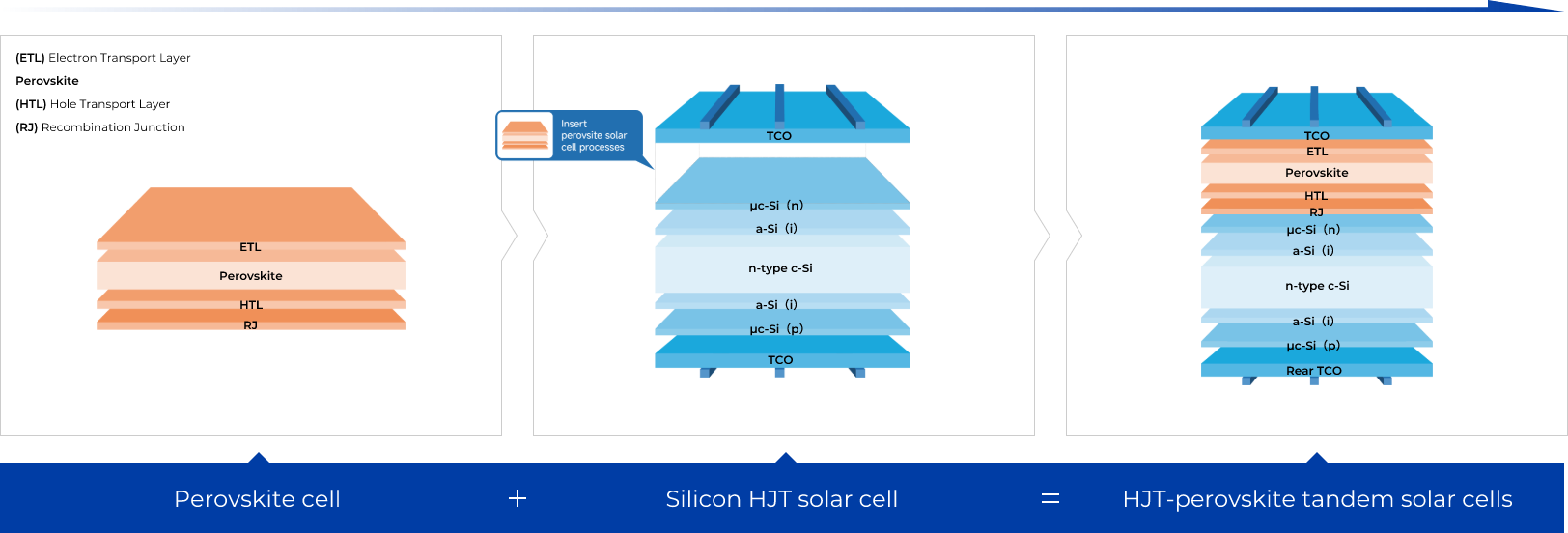
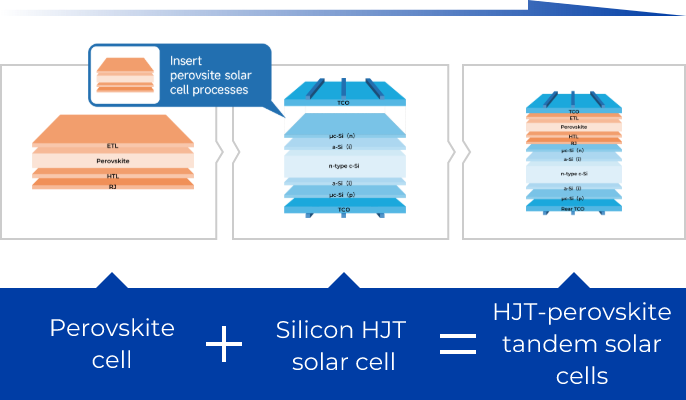
01
By capitalizing on the inherent advantages of thin-film process of HJT solar cells, the integration of a wide-bandgap perovskite cell enables the formation of a high open-circuit voltage, dual-junction tandem structure.
02
The tandem cell can be
implemented within existing
crystalline silicon (c-Si) production
lines by incorporating perovskite
processing equipment, minimizing
additional infrastructure
investment.
implemented within existing
crystalline silicon (c-Si) production
lines by incorporating perovskite
processing equipment, minimizing
additional infrastructure
investment.
03
HJT-perovskite technology can be
seamlessly integrated with HJT
production lines, optimizing cost
efficiency and streamlining
industrial scalability.
seamlessly integrated with HJT
production lines, optimizing cost
efficiency and streamlining
industrial scalability.
HJT, The Next-generation Mainstream of Solar Technology
The efficiency of single-junction crystalline silicon (c-Si) solar cells is approaching its theoretical limit, necessitating the exploration of next-generation technological breakthroughs.
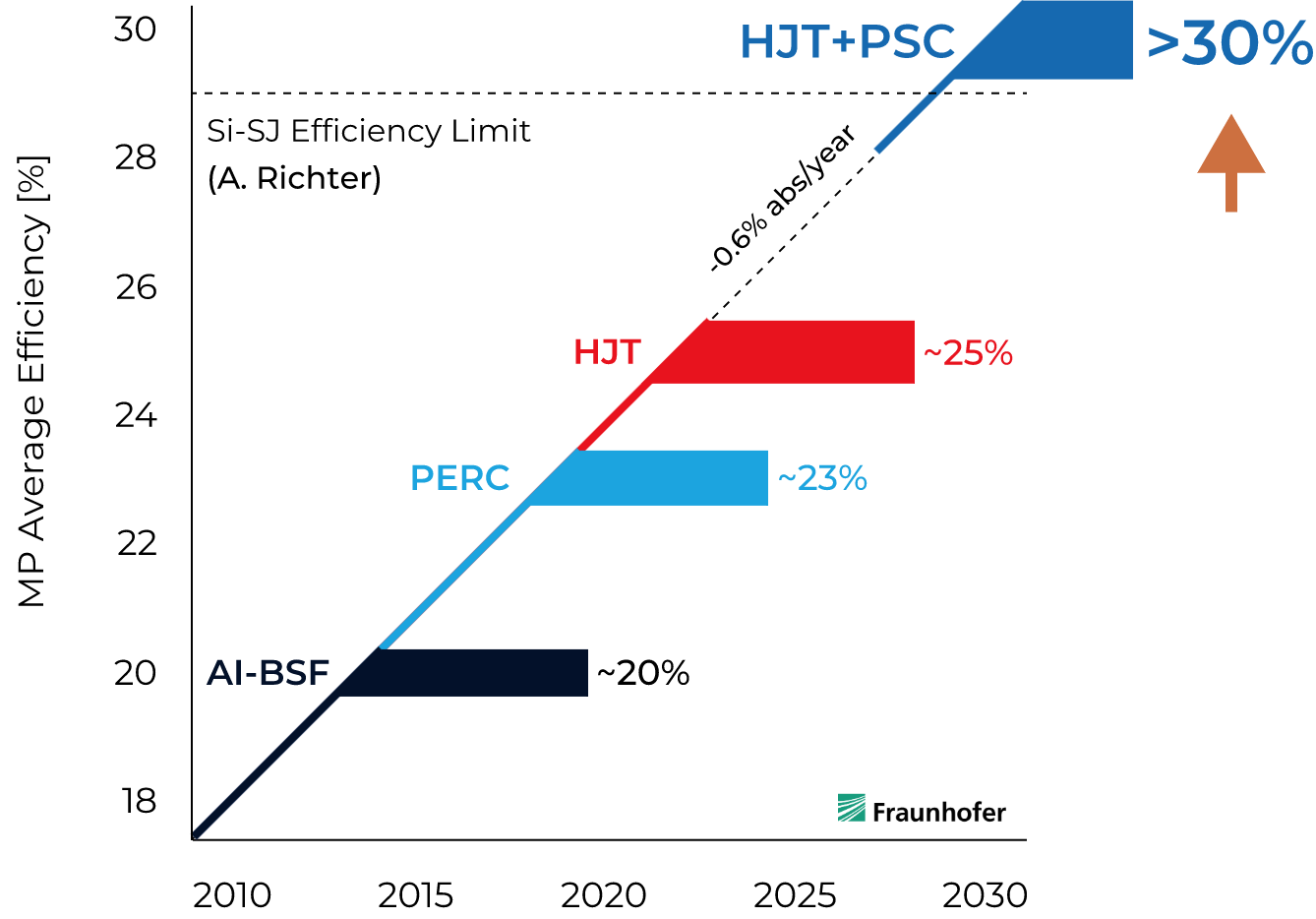
- By integrating perovskite with HJT technology in a tandem structure, the spectral utilization efficiency can be significantly enhanced.
- The theoretical efficiency limit of perovskite-silicon tandem solar cells exceeds 43%, far surpassing that of single-junction silicon cells.
- The tandem structure effectively reduces out-of-band absorption and thermal relaxation losses in crystalline silicon cells, further improving overall energy conversion efficien.
HJT
HJT technology represents the future mainstream platform in the crystalline silicon (c-Si) solar industry.
30%+
The HJT-perovskite tandem structure is a promising technological pathway capable of achieving 30%+ cell efficiency in mass production.
800W+
By 2026, the power output of HJT-perovskite tandem modules is expected to exceed 800W, marking a significant breakthrough in photovoltaic performance and commercialization.
760W+ HJT Leadership Initiative
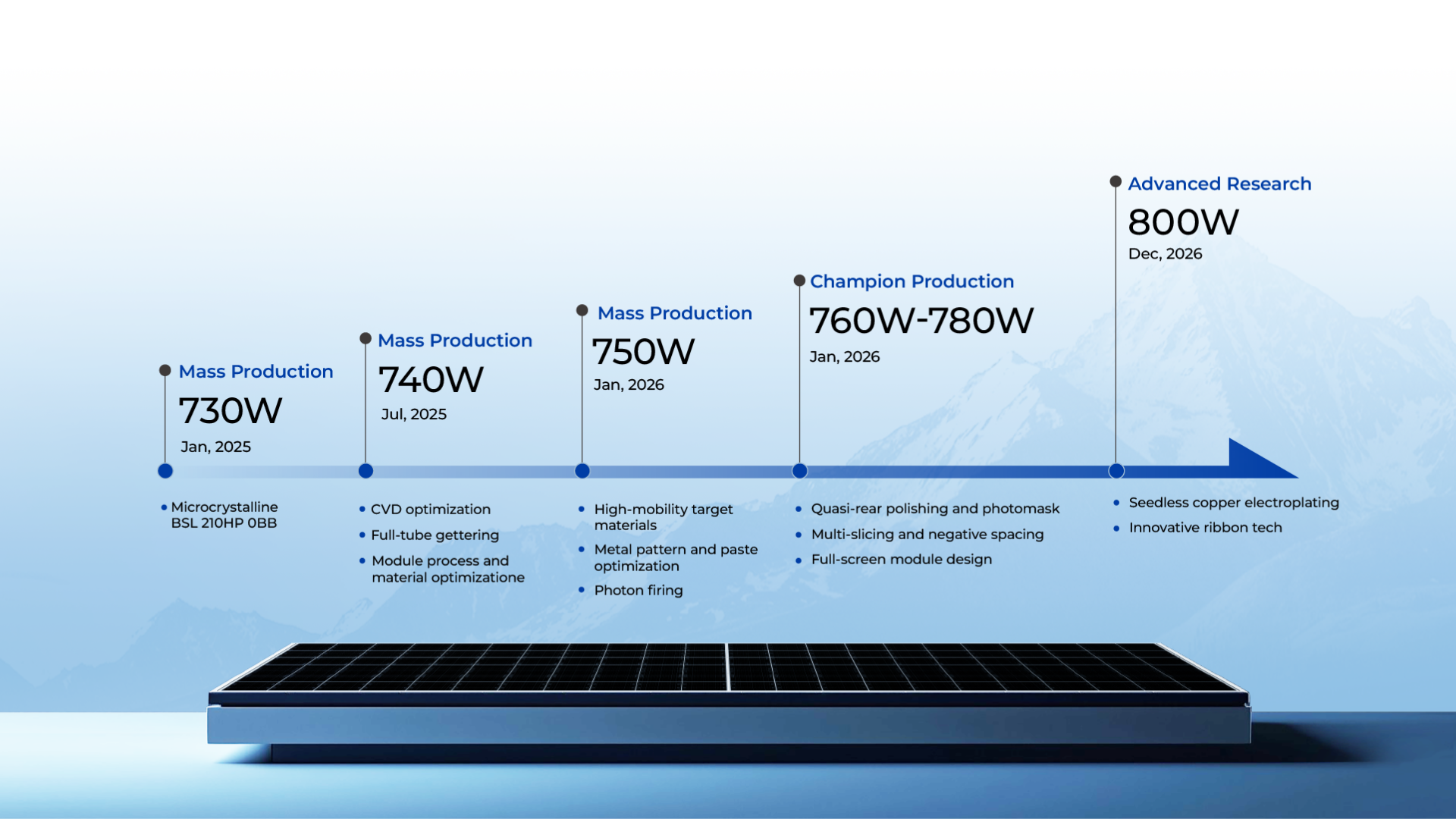
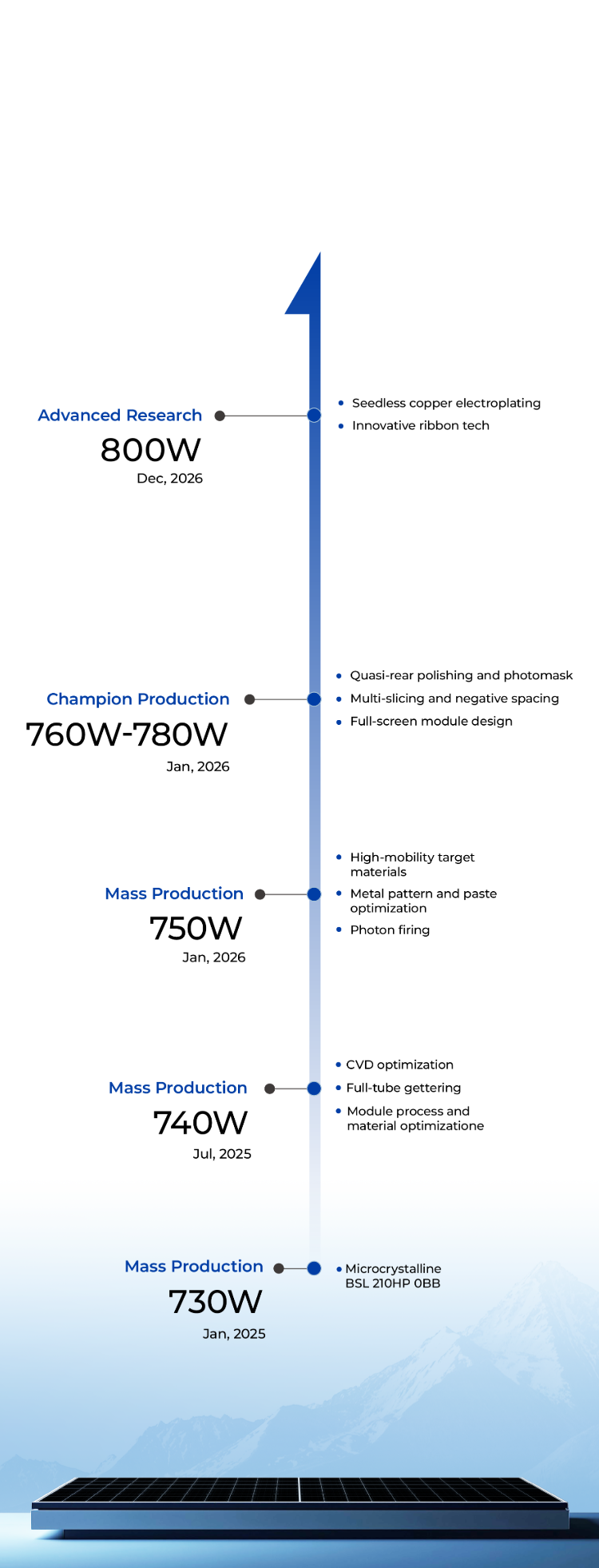
Roadmapof HJT solar cell
Roadmap of HJT solar module
Roadmap of HJT Solar Wafer (SEW)

HJT + Perovskite Tandem
Tandem
0BB
Larger & Thinner Wafer in Mass Production (G12/G12R-half, 90 μm)
Low Ag Consumption
TCO Composite Film
Passivation
Nano-C/μC-Si
α-Si Composite Film for Low Damage

Light Management
Flexible/Curved Encapsulation
High-reliability Encapsulation
High-precision SMBB
High-bifaciality Module
0BB Soldering
Corrosion-resistant Module for Offshore PV

Half-cut Ingot
Novel Gettering
Tungsten Wire Cut
Granular Silicon
newsroom
exhibitions






































